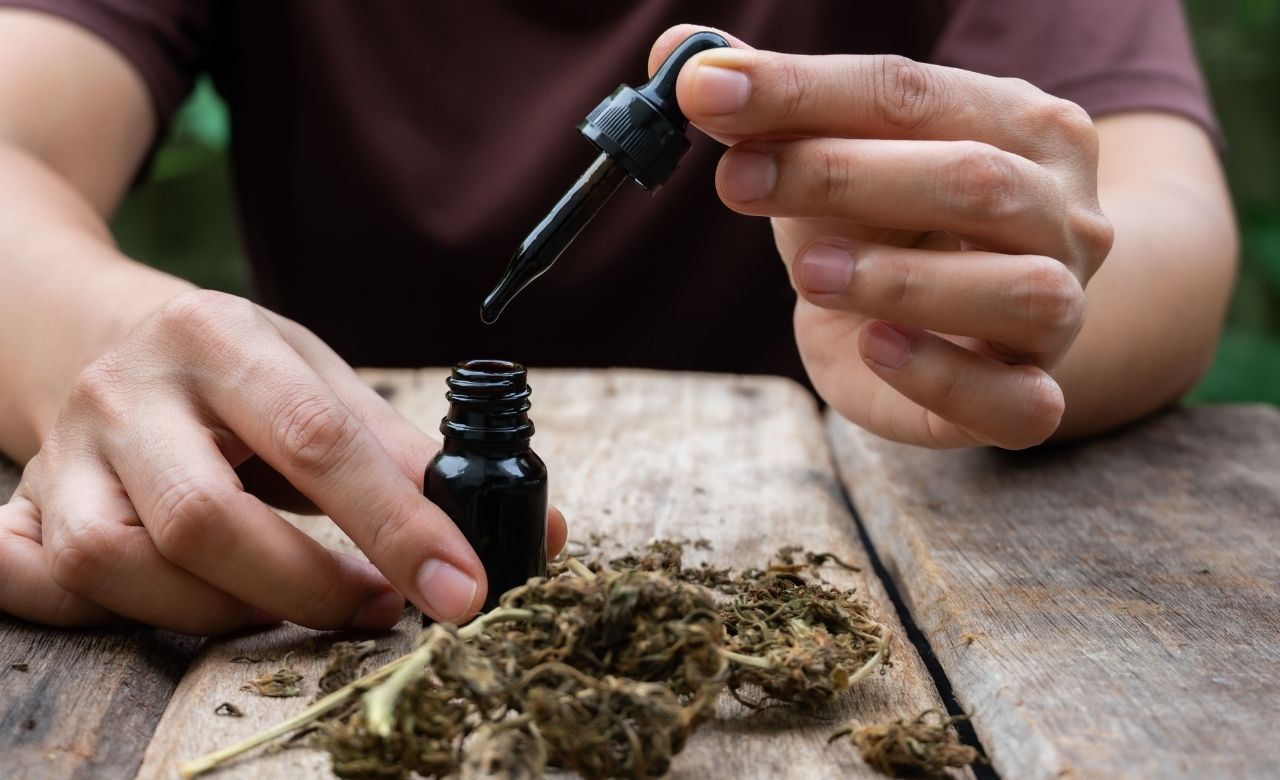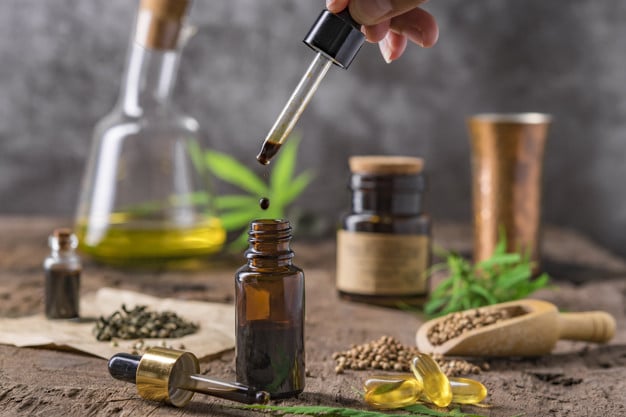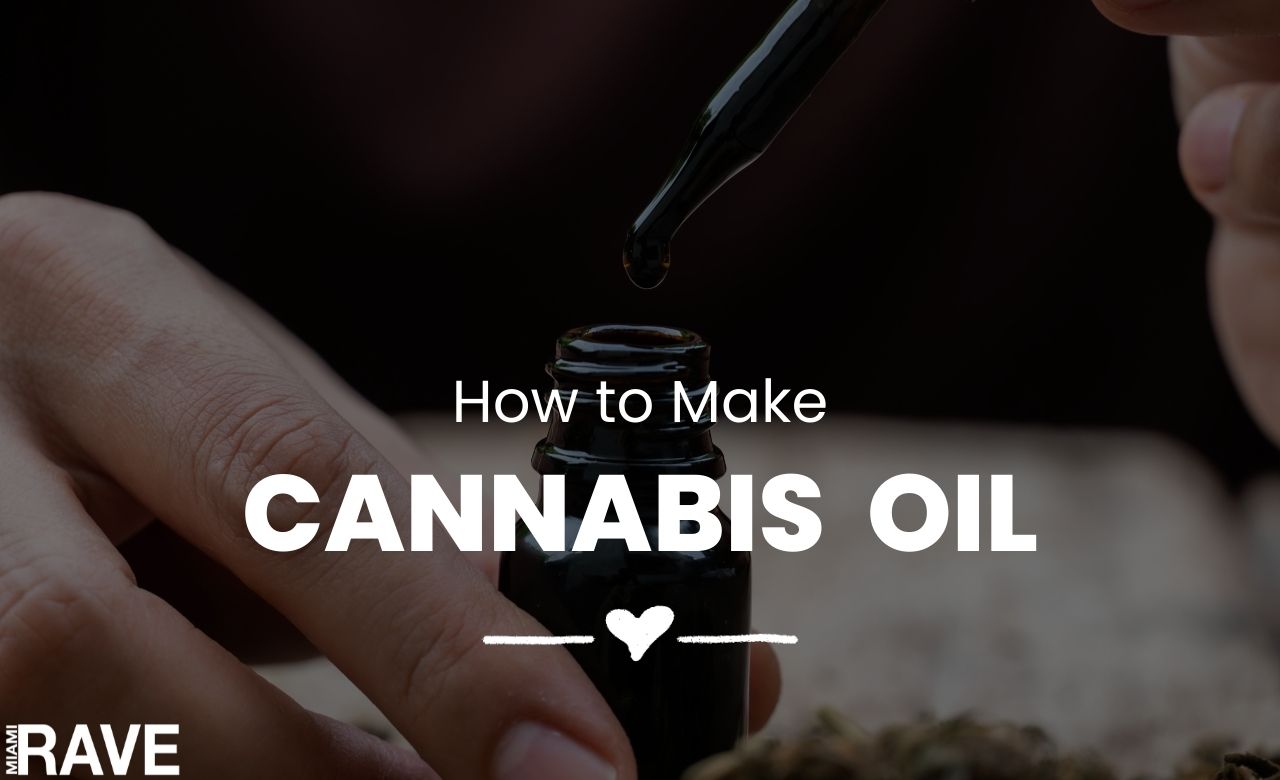What is Cannabis-Infused Oil
Cannabis oil, also known as Cannabis-infused Oil, is usually made by infusing cannabis into any oil by heating cannabis or weed in the oil, so the properties of cannabis get into the oil. There are two hydrophobic parts, THC and CBD, that Get induced in the Oil when Cannabis weed is heated. These hydrophobic particles tend to repel the water molecules and are popular for their concentrated properties. There is another property of CBD and THC: they are fat solvents that show a reaction toward unsaturated fat particles. Whenever the buds of Cannabis plants are heated with oil, the CBD and THC content attached to the birds leave it and start getting clubbed with fat particles of oil.
A wide assortment of oils can be utilized to make weed oil. Nonetheless, coconut oil and olive oil are the most well-known and regularly used edible oils. Coconut oil and olive oil are healthy, delicious, and highly beneficial to the skin, making them flexible choices for sedated edibles or effective applications. Furthermore, the two of them have solid regular antifungal and antimicrobial properties. This forestalls shape and broadens the timeframe of realistic usability of your marijuana oil. Coconut oil is higher in soaked fat, which might tie fat-adoring cannabinoids considerably more promptly than olive oil.
How does cannabis in the oil affect you physically and mentally?
The absolute most normal consequences for actual wellbeing from use of cannabis-induced edibles and oils include:
- a higher probability of curing bronchitis (especially when an individual does not prefer smoking it)
- Stamina starts increasing as the lungs get strong enough due to CBD.
- Resistance to pathogens and diseases because of the impacts of tetrahydrocannabinol, which is the really psychoactive component of the plant.
- help with discomfort
- Decrease in heaving and sickness.
- Quicker pulse by 20-50 beats for each minute, which means more oxygen in your bloodstream.
- Balanced Blood pressure because of more oxygen in the bloodstream
- Alleviation from the side effects of glaucoma for brief periods.
- Expected fight and resistance to developing cancer.
- helps with mental health issues for every age group
- decreasing side effects due to specific ailments
- less irritation
- assisting with glaucoma
- lessening queasiness in individuals going through chemotherapy

Which oil must be chosen?
It is your decision! You can make Cannabis-infused Oil with any kind of oil you like, depending on what is legitimate and accessible in your space. Or, on the other hand, what you want as the outcome. Hemp oil will just hold back CBD (or a minimal measure of THC), while Cannabis mixed oil will probably contain both THC and CBD. The proportion and centralization of THC and CBD rely upon the strain you choose and the specific plant from which it came.
Taking everything into account, THC is psychoactive, and CBD isn’t. In any case, THC does significantly more than impact just your mind! Many studies show that THC has considerably more grounded torment and stress-easing properties than CBD, which is known to assist with sleep deprivation, seizures, and irritation. While they each have outstanding and unmistakable independent advantages, oil or balm containing both CBD and THC has the most noteworthy cannabis essential for a comprehensive exhibit of medical advantages. Known as the “escort impact,” the synergistic blend of THC and CBD through entire plant cannabis utilization and concentrates is more impressive than it is possible for one alone.
Use Decarboxylated Cannabis for cannabis- infusion in oil
The levels of cannabinoids found in the crude or raw form of marijuana (THCA and CBDA) are not the same or comparable as those found in cannabis that has been warmed. For instance, many times, it happens that when you touch or start heating weed with Oil, the CBD and THC content in the weed starts disintegrating, which leads to the oil not getting the right concentration of CBD and THC. Decarboxylation is the most common way of warming and “initiating” weed. It makes marijuana psychoactive and, furthermore, more powerful for restorative applications.
However, it is ideal to do so low, slow, and patiently regarding warming weed. The time and temperature must be in “perfect balances” where crude THCA and CBDA are changed over into dynamic THC and CBD. Be that as it may, over-warming or under-warming weed can prompt lopsided actuation of THC and CBD without an exact cycle. Far more terrible, it might even damage the THC or CBD out and out!
How to make homemade Cannabis oil: easy step-by-step guide

The most important thing that you should keep in mind while making Cannabis oil is to remember not to overheat it. As a matter of fact, a few people decide to add decarbed cannabis to oil and permit it to mix at room temperature (in obscurity) for a considerable length of time, as opposed to warming it by any means.
The hotness applied in this formula facilitates the cannabinoid extraction interaction to tie with oil. Be that as it may, because we are beginning with decarboxylated marijuana, the objective is to try not to warm it more than 200 degrees. It is better to keep the temperatures between 110 to 170 degrees. The dynamics of THC, CBD, and terpenes are well balanced when they are kept at low temperatures. That is, except if you deliberately need to change THC over to CBD to make an extraordinarily languid and quiet eventual outcome.
That is where the twofold evaporator or slow cooker (with a low-temperature setting) proves useful! Significantly over the least fire, warming oil in cannabis straight to the oven is considerably more challenging to forestall overheating and makes “problem areas” – annihilating our valuable cannabinoids.
We propose checking the oil temperature with a test thermometer if conceivable. Since oils have a higher limit (or “smoke point”) than water, the oil won’t give off the impression of being basically as hot as it truly is! For instance, the oil might be above and beyond 212 degrees yet not noticeably air pocket and bubble-like water at a similar temperature.
If your cannabis isn’t yet decarboxylated, you should shred them to pieces and finely ground them. Uniformly spread them on the baking sheet, and heat it in the broiler at 250°F for 25 to 30 minutes for THC-prevailing strains. When dealing with strains with high CBD, you should keep in mind that they are to be kept at a similar temperature for almost 45 minutes to an hour. Or on the other hand, 45 minutes for adjusted THC/CBD strains.
If you have a kettle, then add water to the base. If the kettle has a limit of two cups, you then add 1 cup of coconut oil to eat. Heat until it liquefies. (Or, on the other hand, on the low/warm setting in simmering cannabis)
Mix in 7-10 grams of decarboxylated weed into the liquefied oil. Additionally, incorporate a discretionary few grams of crude ground weed, assuming you want.
Keep on warming the marijuana and oil over low hotness for 30 to an hour, mixing incidentally. You can proceed with this cycle for a long time whenever wanted; however, numerous plans call for simply 20 to 30 minutes. If accessible, utilize a test thermometer to actually look at the temperature. Change the hotness depending on the situation to keep the oil beneath 200°F. You have to check the temperature, which should remain between 120 to 160 degrees for almost an hour.
When you let the oil sit for the required time, you must be ready with cheesecloth and sister to separate the ingredients and the oil. Pour the marijuana and oil combination through the sifter. Accumulate the cheesecloth and delicately press out the abundance of oil from the cannabis. Caution: Take care of your hands as they might get oily, and also check the temperature of the oil. It might be hot when you are working with it. It would be better if you wore gloves while working with oil.
Once the oil is separated from the ingredients, you have to store the Cannabis induced oil in a container that can block any interaction with air. Also, remember it should not have any interaction with bright light too. The Jar you choose must be Opaque or translucent and kept away from light. You can also keep the jar in the fridge if you want.
Handcrafted Cannabis Oil cannabis: Proceed with Caution.
Some Important things you must know
Homemade edibles(cannabis-infused) are precarious because deciding their potency is truly challenging. Without research center testing (which is costly and not promptly accessible to the vast majority), it is difficult to ascertain the THC and CBD content of the completed weed oil or sedated edibles you arranged.
As a matter of first importance, if you are utilizing local marijuana as we do, you probably don’t have the foggiest idea about the strength of the bud you began the interaction with. Regardless of whether a strain is promoted to have a specific THC and CBD content or proportion, local plants can shift fiercely, relying upon how they were developed, reaped, dried, relieved, and put away. Besides, varieties inside plants (communicated as aggregates) drive them to have contrasts even among plants of a similar strain.
Assuming that you have regularly used these oils and edibles that are made from cannabis, you might have understood the quantity You are ingesting. When you know the drill, you will know how much THC and CBD content you consume, and keep the doors in mind. Choose wisely and consume accordingly.

